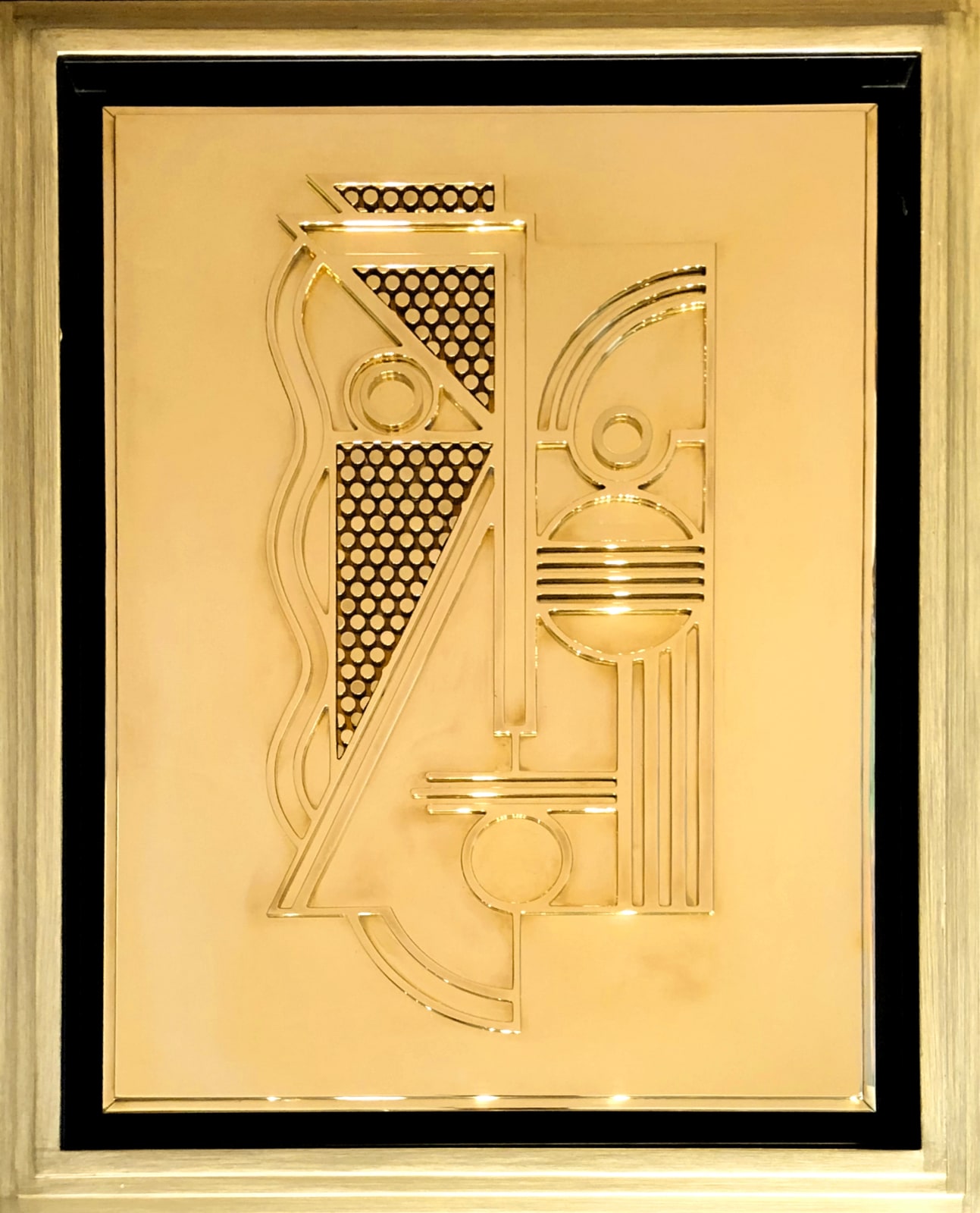Roy Lichtenstein American, 1923-1997
61 x 46 cm
This beautiful brass relief sculpture is from an edition of 100, dated 1970. Our version is mounted in a frame and signed on a plaque affixed to the reverse. Lichtenstein looked back to Russian painter Alexej Jawlensky and his series of 'Constructivist Heads' from the 1930s, some of which had been on view at the Pasadena Art Museum where Lichtenstein saw them. Lichtenstein remarked that “What interested me was - ‘what in the world a modern head could be about' - I mean to make a man look as if it’s been made by an engineering draftsman" (Lichtenstein, 'Roy Lichtenstein, Penguin Random House, 2009, p 45).
Lichtenstein wanted to make a man look like a machine, someone dehumanized by mechanization. He saw artists including Jawlensky and Fernand Léger taking on the forms of earlier Cubists like Braque and Picasso and making them more l for a new technological age. This also informed his famous Ben-Day dot paintings, inspired by comic strips which he described as relying on 'machine thinking.' The heads of his comic strip figures are not entirely dissimilar to the present work, as they too are predicated by mechanization and what he called 'the economics of printing' (Lichtenstein, 'Roy Lichtenstein, Penguin Random House, 2009, p 46).
One of the most significant postwar American artists, Lichtenstein is most famous for his defining contributions to Pop Art. Lichtenstein often engaged with the commercial imagery of his time, once thought too lowbrow for a serious art form like painting. From his vantage point as an artist, Lichtenstein engaged ironically with the banal clichés of commercial commodification. Using these forms, he questioned art history and engaged with the works of other art historical masters, like Jawlensky or Claude Monet. Along with Warhol, Lichtenstein was interested in seriality and reproduction; his works (and the high prices commanded) undermine Walter Benjamin's insistence that reproductions lack the "presence in time and space, [and] unique existence" which contributes to the "aura" imbued in an original, work making it superior to copies (Walter Benjamin, 'Art in the Age of Mechanical Reproduction' in Illuminations, ed. Hannah Arendht, Mariner Books, 2019, pg. 169).
As a significant contributor to American Pop Art, Lichtenstein's work is represented in major museums collections worldwide, including The Museum of Modern Art, New York; Tate, London; and Centre Pompidou, Paris.
Literature
Gemini 247.ML. Corlett, The prints of Roy Lichtenstein, a Catalog Raisonne, 1948-1993, New York, 1994, No. 20, p. 33 (another illustrated example). This work is listed in the artist's online catalog raisonne.




















